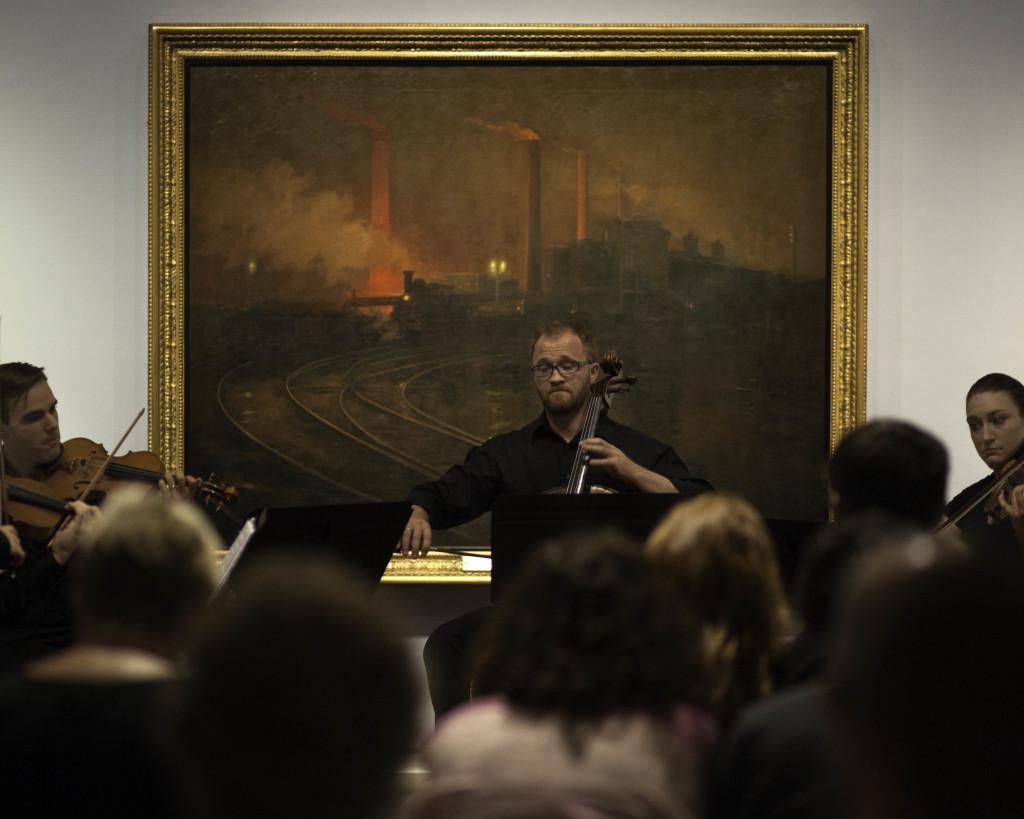Moviegoers have an expectation that when they pay to watch a movie, there will be music to match. They are so trained to expect it, in fact, that they instantly notice when a movie deviates from this norm. With this pairing of visuals and music, It shouldn’t be too surprising to imagine paintings with music, and the Chamber Music Series aims to do just that. The Series started off its 2015-2016 season last night on September 2nd at 7pm. The University of Utah’s Graduate String Quartet, composed of Garrick Woods on cello, Staci Armstrong on viola, and both Will Martin and Tim McMurray on violin, provided the music, performing inside the new “British Passion for Landscape: Masterpieces from National Museum Wales” exhibit featured in the Utah Museum of Fine Arts.
The museum was free to all visitors to allow anyone and everyone interested in the Series to take part in what it had to offer. Visitors were given the option to either sit and focus entirely on the music of the Quartet or to wander amongst the paintings with the Quartet creating the mysteriously melancholy ambience.

The “British Passion for Landscape: Masterpieces from National Museum Wales” exhibit is on loan from National Museum Wales and will be in residence at UMFA until December 13th. Every artist featured in the exhibit managed to notice and capture different aspects of the natural world around them. Each piece provided a different attempt to represent that which is sublime, the overwhelming, the mildly terrifying. Many of the paintings, emphasizing vast expanses of land compared to miniature figures of humans, forced viewers to consider the permanence of nature pitted against the fragility of human existence. Some paintings portrayed humans attempting to tame that nature, often with disastrous results.
Just as movie producers are careful to ensure that the music they choose mirrors the atmosphere surrounding the events playing out on the screen, the organizers of this event were careful to match the music to the art on display. Looking at paintings such as David Cox’s “The Train on the Coast” while listening to a live performance featuring pieces like “Tango” by Jeremy Cohen provided a more holistic experience; viewers could both see the empty expanses of British landscape juxtaposed with the small efforts of humanity and hear the deeper, and thus somewhat darkly mysterious, tones of the Quartet’s stringed instruments.
Time viewers had ample time to enjoy the exhibit by the time the Quartet had finished its performance, and the overall atmosphere in the gallery was rather somber comfortably so. Few visitors had spoken at all during the performance, and that did not seem to change much even with the concert’s end, further solidifying a contented feeling of quiet reflection.
The next performance in this series is scheduled for October 21st when the museum will again be free to all visitors. If it is at all possible, I highly recommend you take advantage of this unique opportunity to enjoy the combination of live music and painting masterpieces. Who knows? You might find that you enjoy it. At the very least, it would certainly provide a respite from the busy world of homework.

